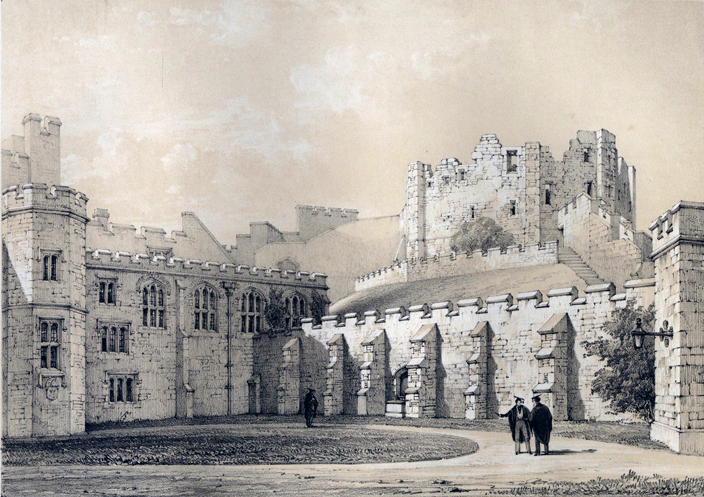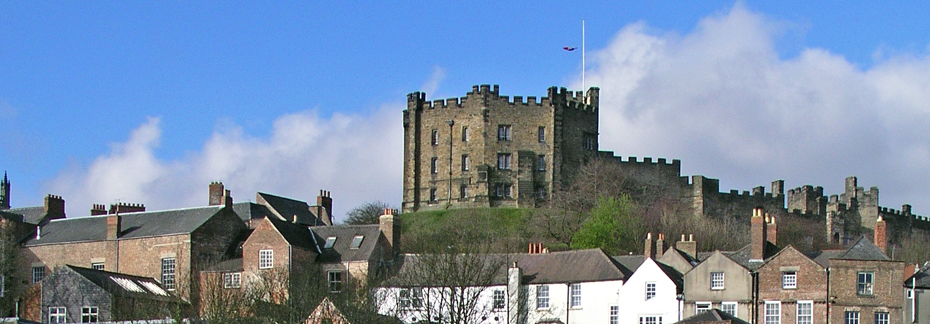The Keep – a fortified tower – was a castle’s final stronghold.
The current keep was constructed in the 14th century by Bishop Hatfield, replacing the original Norman structure. Its octagonal shape was a development from earlier keeps, which were square or rectangular. The advantages of an octagon were that its corners were much harder to destroy, and that there were no 'blind spots' for those trying to defend it. Blind spots were often a problem with square keeps. Round keeps were another effective design that was frequently used.
The keep was as much a symbol of power as it was a utilitarian feature of a castle, especially in the 14th century when Hatfield built this one.
With time, as the Bishop of Durham's residence evolved from a fortress into a palace, the keep's importance declined. It feel into disuse, and, eventually, ruin.

The Castle Keep as it looked in 1838, before its reconstruction.
The Keep as University Accommodation
The Castle was given to the University in 1837, five years after its establishment. By then, it was clear that extra residential accommodation was urgently needed to accommodate the growing numbers of students. With this in mind, the keep, then in very poor condition, was substantially rebuilt in 1840 by the architect Anthony Salvin.
Although the keep is often regarded as a 19th century construction, an examination of the stonework indicates that Salvin’s work probably involved consolidating the original structure, rather than rebuilding from scratch.

